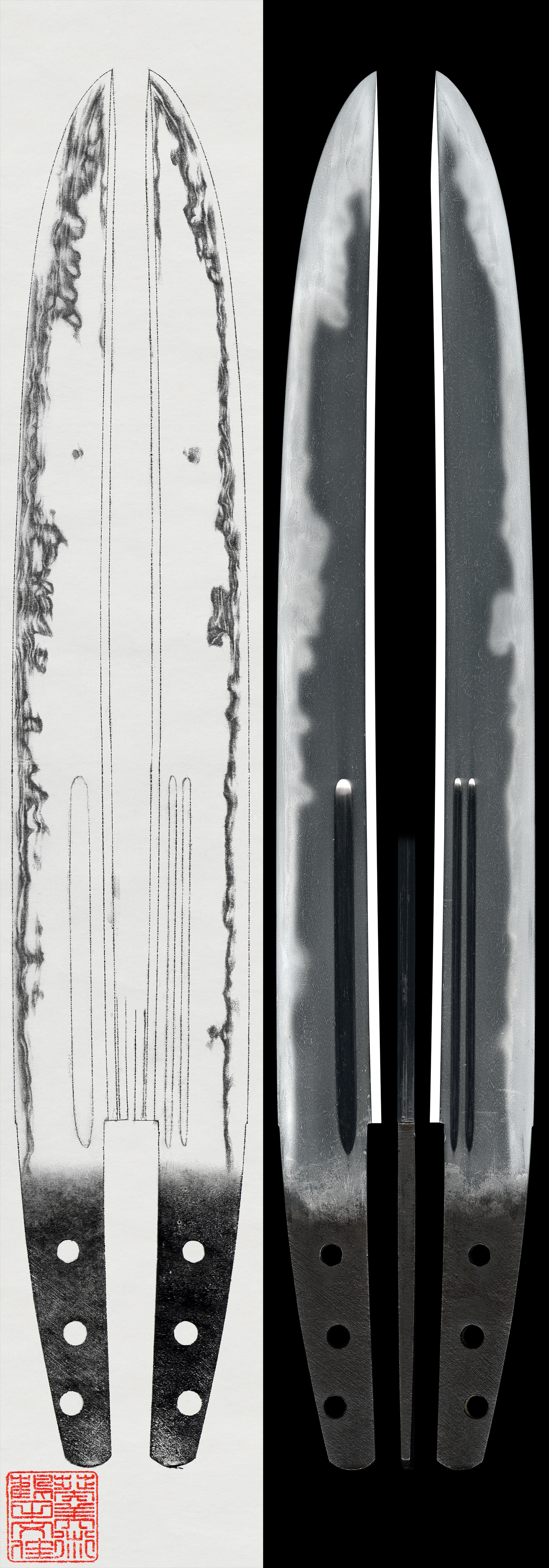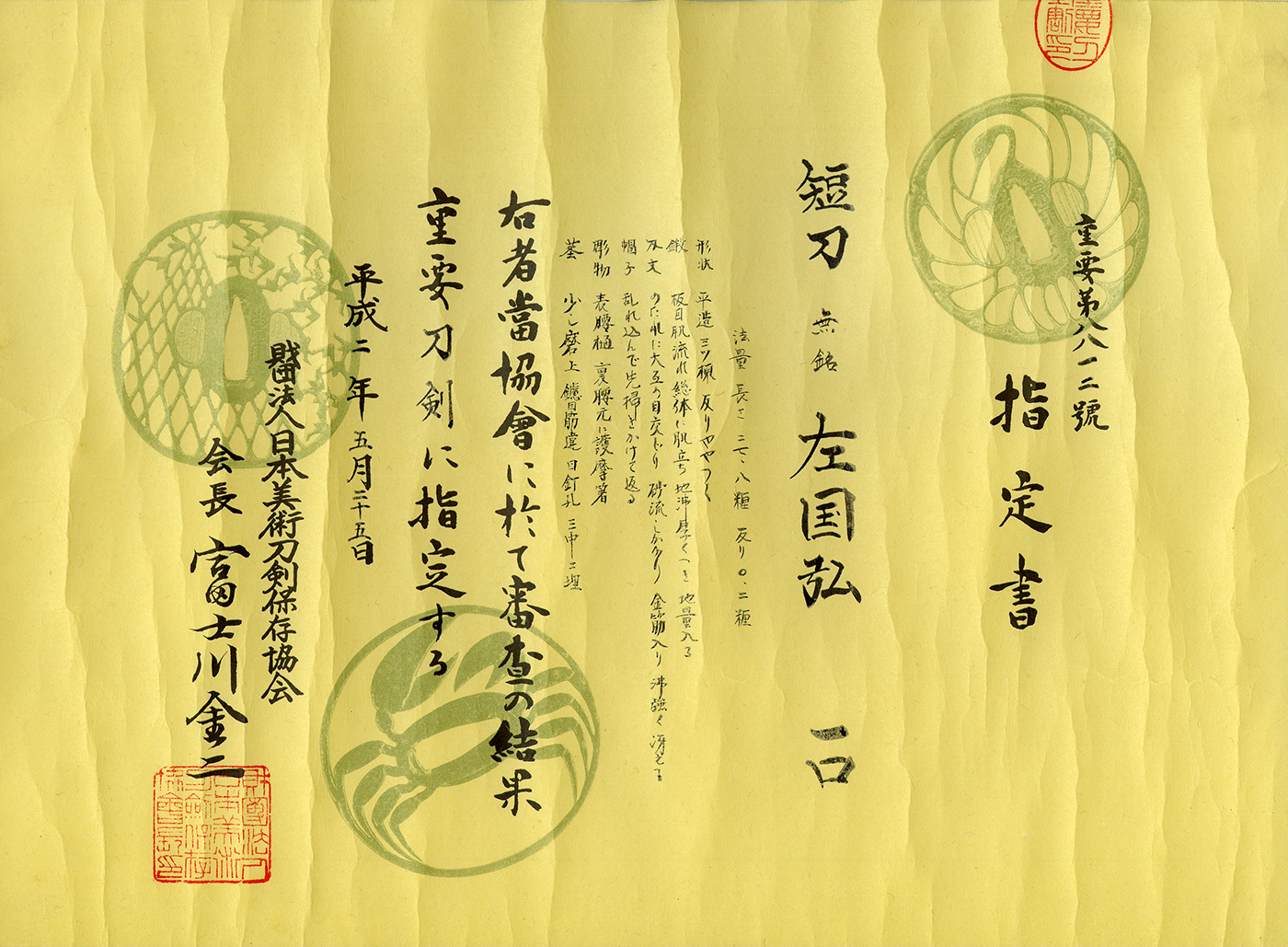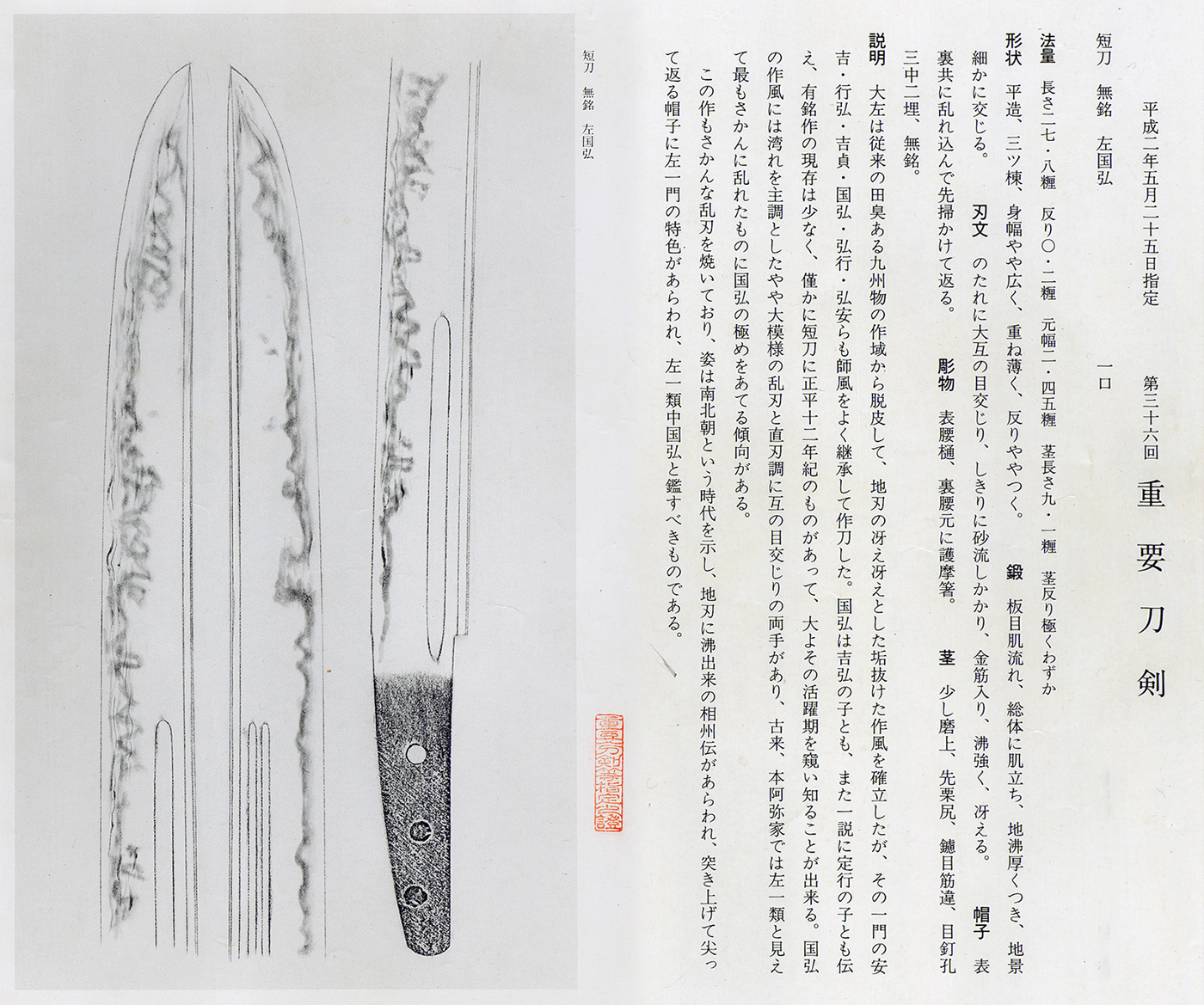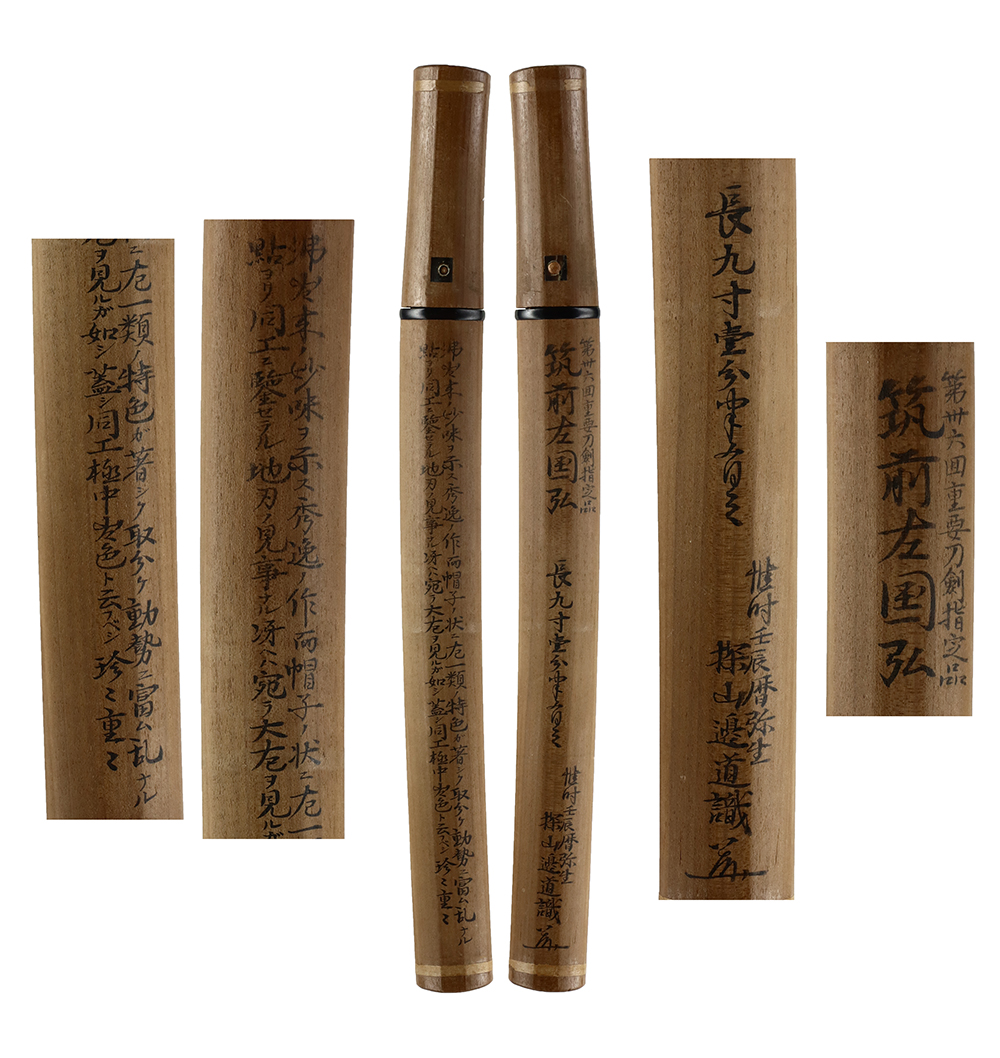Bid History
Auction has expired
Auction Expired because there were no bids|
Auction started
2025/08/23 (Sat) 11:28 |
※ = Auto
Tanto: Shirasaya with Koshirae (NBTHK 36th Juyo Token)
Signature: Mumei (Unsigned)(appraised as Sa Kunihiro, 左国弘)
Sayagaki translation:
the 36th Juyo Touken designated piece
Chikuzen Sa Kunihiro
Length: 9 Sun 1bu and half
This blade is an outstanding work that beautifully demonstrates the refinement of a nie-deki construction. The distinctive characteristics of the boshi clearly reflect the unique traits of the Sa school, and the dynamically expressive irregular pattern strongly indicates the hand of this smith(Kunihiro). The remarkable clarity and brilliance of the jigane and Hamon evoke the quality seen in the works of O-sa. Among the creations of this swordsmith, this piece can be regarded as truly exceptional — a highly rare and precious masterpiece.
written By Mr.Tanobe in March, 2012.
We divide 4 sections for each sword as Saijyo Saku, Jyojyo Saku, Jyo Saku and Regular Saku.
This piece is ranked as Saijyo Saku (highest grade) among works attributed to Mumei (Sakonihiro).
Habaki: Double gold foiled habaki
Blade Length: 27.8 cm (10.94 in)
Curvature: 0.2 cm (0.08 in)
Mekugi Hole: 3
Width at Base (Motohaba): 2.56 cm (1.01 in)
Thickness of rim (Kasane): 0.43 cm (0.17 in)
Sword Weight: 150 grams
Era: Nanbokucho period, mid-14th century
Shape: slightly wide and thick Mitsumune Tanto with slight carvature.
Jigane: intense Itame hada with much Jinie and Chikei.
Hamon: Nie base Gunomemidare with Sunagashi and Kinsuji. Boshi is midare and pointed with Hakikake.
Features: Chūkōto: Ryōwazamono: Jyojyo Saku: Chikuzen
The Samonji school, active in Chikuzen during the Nanbokucho period, was founded by the O-sa and included many distinguished smiths. This school established a distinctive Soshu-den style, characterized by a brilliantly clear Jigane and Hamon that differed from the conventional works made in Kyushu area. Among the group, Kunihiro was renowned for forging blades with flamboyant, irregular hamon. This blade is an excellent example of the school’s artistry, featuring a well-forged, nie-rich construction with abundant activity throughout the Jigane and Hamon. The boshi, sharply turning back, exemplifies the hallmark traits of the Samonji school.
Koshirae:
Tsuba: Mokko-shaped shakudo plate with designs of Daruma, landscape, and gourds. Signed: Koeishi Nomura Kaneaki.
Fuchi-Kashira: Shakudo ground with an engraved depiction of Jurojin, the God of Longevity, accompanied by a turtle symbolizing long life.
Kozuka: Shakudo with two figures on a boat, with small knife attached.
36th NBTHK Juyo Certificate
Aoi Art estimation paper: Whole Oshigata








Auction Expired
Auction Expired because there were no bids
Auction has expired
Auction Expired because there were no bids|
Auction started
2025/08/23 (Sat) 11:28 |
※ = Auto